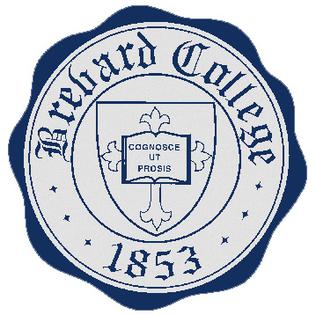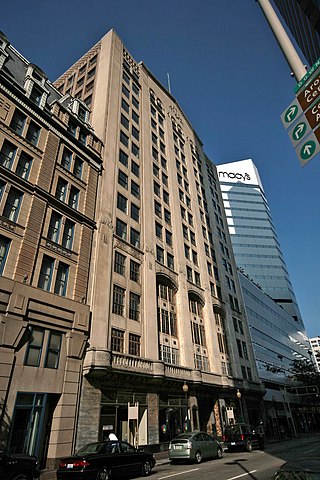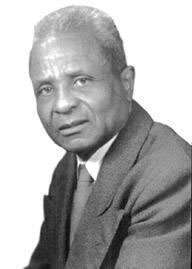
Greensboro is a city in and the county seat of Guilford County, North Carolina, United States. At the 2020 census, its population was 299,035; it was estimated to be 302,296 in 2023. It is the third-most populous city in North Carolina after Charlotte and Raleigh and the 69th-most populous city in the United States. The population of the Greensboro-High Point, NC Metropolitan Statistical Area was estimated to be 789,842 in 2023. The Piedmont Triad region, of which Greensboro is the most populous city, had an estimated population of 1,736,099 in 2023.

Greensboro College is a private college in Greensboro, North Carolina. It is affiliated with the United Methodist Church and was founded in 1838 by Rev. Peter Doub. The college enrolls students from 32 states, the District of Columbia, and 29 countries.

Bennett College is a private historically black liberal arts college for women in Greensboro, North Carolina. It was founded in 1873 as a normal school to educate freedmen and train both men and women as teachers. Originally coed, in 1926 it became a four-year women's college. It is one of two historically black colleges that enroll only women, the other being Spelman College.

The Divinity School at Duke University in Durham, North Carolina, is one of ten graduate or professional schools within Duke University. It is also one of thirteen seminaries founded and supported by the United Methodist Church. It has 39 regular rank faculty and 15 joint, secondary or adjunct faculty, and, as of 2017, an enrollment of 543 full-time equivalent students. The current dean of the Divinity School is the Rev. Dr. Edgardo Colón-Emeric, who assumed the deanship on Aug. 31, 2021. Former deans include the prominent New Testament scholar Richard B. Hays, who stepped down in 2015.

Brevard College is a private college in Brevard, North Carolina. The college grants Bachelor of Arts, Bachelor of Science, and Master of Science degrees.
Ernest A. Fitzgerald was an American bishop of the United Methodist Church, elected in 1984.

Samuel Sloan was a Philadelphia-based architect and best-selling author of architecture books in the mid-19th century. He specialized in Italianate villas and country houses, churches, and institutional buildings. His most famous building—the octagonal mansion "Longwood" in Natchez, Mississippi—is unfinished; construction was abandoned during the American Civil War.
The Western North Carolina Conference is an Annual Conference of the United Methodist Church. This conference serves the western half of the state of North Carolina, with its administrative offices and the office of the bishop being located in Huntersville, North Carolina. It is part of the Southeastern Jurisdictional Conference.
William Augustus Edwards, also known as William A. Edwards was an Atlanta-based American architect renowned for the educational buildings, courthouses and other public and private buildings that he designed in Florida, Georgia and his native South Carolina. More than 25 of his works have been listed on the National Register of Historic Places.

J.A. Jones Construction was a heavy construction company headquartered in Charlotte, North Carolina. Operating internationally since the 1950s, it merged with Germany's Philipp Holzmann AG in 1979. In 2003, the company ceased operations due to the failure of its parent company.
Hobart Brown Upjohn (1876–1949) was an American architect, best known for designing a number of ecclesiastical and educational structures in New York and in North Carolina. He also designed a number of significant private homes. His firm produced a total of about 150 projects, a third of which were in North Carolina.

Lockwood, Greene & Company was an American engineering firm. It was active under various names from 1871 to 2017.

Charles C. Wilson was an American architect in practice in Columbia, South Carolina, from 1896 until his death in 1933.

George Feick was a German-American builder in Sandusky and Oberlin, Ohio. His works include the Wyoming State Capitol, multiple buildings at Oberlin College, and numerous office buildings, churches, schools, libraries and residences in and around Sandusky. Several of his works are listed on the National Register of Historic Places.
James Mackson McMichael, known as James M. McMichael, was an American architect. Several buildings he designed are listed on the National Register of Historic Places.
Orlo Epps was an American architect, mathematician, physicist, and socialist writer.
Charles Christian Hook (1870–1938) was an American architect. He was also the founder of FreemanWhite, Inc. a Haskell Company (1892), the oldest practicing firm in North Carolina and currently the 11th oldest architecture firm in the United States.

Warmoth Thomas Gibbs Sr. was an American educator, retired Second Lieutenant in the United States Army, civil rights activist, and fourth president of North Carolina Agricultural and Technical State University. Gibbs was one of the first black commissioned officers in World War I and served as president of then North Carolina Agricultural and Technical College from 1955 to 1960. During his presidency, North Carolina A&T became accredited by the Southern Association of Schools and Colleges.

Willa Beatrice Player was an American educator, college administrator, college president, civil rights activist, and federal appointee. Player was the first African-American woman to become president of a four-year, fully accredited liberal arts college when she took the position at Bennett College in Greensboro, North Carolina.












